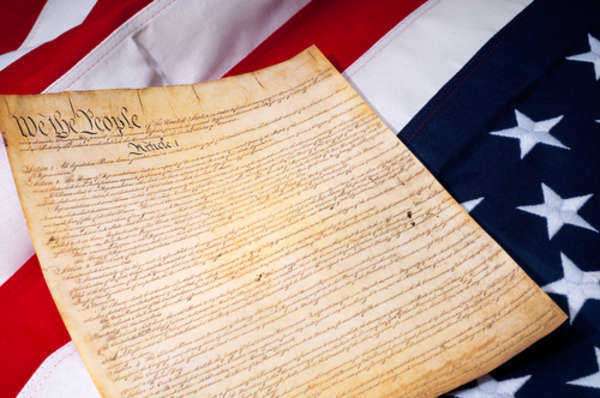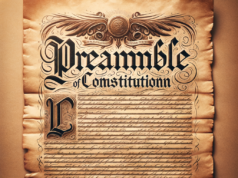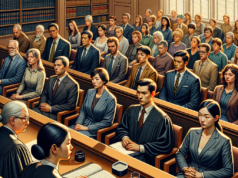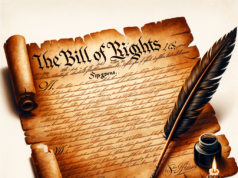
Constitutional law is the branch of law that deals with the interpretation, implementation, and enforcement of the United States Constitution. The Constitution serves as the foundation for the legal system of the United States and is considered to be the supreme law of the land. As such, constitutional law is a critical component of the American legal system.
The Basis of Constitutional Law:
The United States Constitution was written in 1787 by the Founding Fathers of the country. It established the framework for the government of the United States, as well as a set of fundamental principles that govern the rights and responsibilities of citizens. These principles are the basis for constitutional law and are considered to be the fundamental principles of justice and liberty that underlie all American law.
The Constitution is divided into three main parts: the Preamble, the Articles, and the Amendments. The Preamble sets forth the goals and objectives of the Constitution, while the Articles establish the structure of the federal government and define the roles and responsibilities of the different branches of government. The Amendments are additional provisions that have been added to the Constitution over time, which provide additional protections for individual rights and clarify the powers of the government.
Interpreting the Constitution:
One of the most critical aspects of constitutional law is the interpretation of the Constitution. The Constitution is intentionally written in broad, general terms, and its provisions are often subject to debate regarding their meaning and application. This is where the judiciary comes in, as it is responsible for interpreting the Constitution and applying its provisions to specific cases and controversies.
There are several different methods of constitutional interpretation, including originalism, textualism, and living constitutionalism. Originalism emphasizes the importance of interpreting the Constitution based on its original intent. Textualism takes a more literal approach to constitutional interpretation and focuses on the plain text of the Constitution. Living constitutionalism holds that the Constitution should be interpreted based on the changing needs and values of society over time.
Enforcing the Constitution:
The Constitution establishes a system of checks and balances that is designed to ensure that no one branch of government becomes too powerful. The judiciary plays a critical role in enforcing the Constitution, as it is responsible for interpreting the meaning of the Constitution and ensuring that the other branches of government comply with its provisions.
One of the most important ways in which the judiciary enforces the Constitution is through judicial review. Judicial review is the power of the courts to review the constitutionality of laws and government actions. The Supreme Court has the final say in the interpretation of the Constitution, and its decisions are binding on all other courts in the United States.
In conclusion, constitutional law is a critical component of the American legal system. The Constitution serves as the foundation for the legal system of the United States, and its principles underlie all American law. The interpretation and enforcement of the Constitution are critical to ensuring that the rights and freedoms of American citizens are protected, and that the government operates within the bounds of the law.
The basis of American law and governance derives from the United States Constitution and the various Amendments made to it and judicial decisions made in relation to it. The Constitution places power in the two houses of Congress and the judicial and executive branches. Laws passed in the United States must be shown to fall within the limits and privileges described by the Constitution.
The Constitution places power with the aforementioned governmental bodies but does so with a view to benefiting the general mass of citizenry, and to this end understands governmental power as essentially deriving from the consent and “natural rights” of the governed as opposed to prior models which had flourished in Europe and elsewhere in which political power was understood in a strictly hierarchical sense, deriving originally from a supreme being and then flowing down to a monarch, who could thus dispense it to various supporters in order to exercise it over subjects. The natural rights idea helped orient the Constitution more toward the goodwill of its subjects and less to the maintenance of power for its own end.
The conception of natural rights in the Constitution was employed in part to fulfill a political project of guaranteeing the recently arrived communities of people in the Americas the ability to determine their own actions, but it came into use due to its prevalence in the era’s intellectual and political culture. It reflected the influence of scientific inquiry and global exploration on the European intellectual tradition, which had previously been dominated by classical philosophy and Christian theology.
Rather than simply asserting what would now be termed human rights, the Constitution proposed a specific idea about the early condition of the human race with its language of “natural rights.” The basic proposal offered by this concept is that human beings are naturally disposed toward specific kinds of behavior that in a “state of nature,” one without governance and other large institutions for ordering behavior, occur without restriction. A basic purpose of government, then, is to limit its effect on the citizenry it governs, while making provisions for the other forms of restrictions which other kinds of organizations may place on these innate and basic rights.
The procedural and ideological basis for the Constitution derived from disparate sources. The work of intellectual figures of the last few centuries, including the Englishman John Locke and the Frenchman Montesquieu, influenced the drafters both on the larger intellectual theories lying behind the Constitution and the specific procedural forms such ideas were placed in, such as the tripartite division of government functions. Some of the specific language on rights, though established as priorities by recent European intellectual trends, had been enjoyed in some form or another in the colonies’ former ruler of England since the Middle Ages or the Renaissance, such as due process.
The dependence of the Constitution on the approval of the thirteen states meant that their practical needs were also taken into consideration and their status as discrete entities respected in the legal language.

























